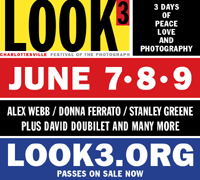|
|

|

|
©2002-2021 RDPC. Notices. |
| HOME | GET YOUR COPY | VIEW CONTENTS | ABOUT PROOF | CONTACT INFO |
| CURRENT ISSUE | ARCHIVES | WEB EXCLUSIVES |

|
||



|
(ADVERTISEMENTS)
   |
|
Fall 2003:
Web Exclusive
TV Dating Shows:
|
LOOKING FOR LOVEWho’s watching all those TV dating shows? And why aren’t they out there looking for Mr. or Ms. Right?By Jan Balakian It amazes me that anyone finds the right person to marry. The perfect match that so many singles seek is about as likely a quarry as the mythical Eighth Wonder of the World. If you’re a woman, you want someone with Ben Affleck’s looks, Bill Gates’s brains, Jimmy Carter’s compassion, Bill Clinton’s charisma, Jerry Seinfeld’s sense of humor and Pete Sampras’s athleticism. It’s just not gonna happen. How did our standards get so high? The pill and the women’s movement had much to do with it. Not only did the pill bring sexual and economic liberation for women, but once people could hook up with no rings attached, many no longer felt compelled to marry for money or sex. The result is that dating has become a career, as well as a cultural obsession. Many Americans seem to think that shopping for love doesn’t have to end in marriage, and maybe doesn’t have to end at all. All this looking around has led to something that requires even less of a commitment: watching TV. With millions of Americans desperately seeking advice on how to find Mr. or Ms. Right, television has met the challenge with so-called “reality dating” programs. Among those now airing in various U.S. markets are: EX-treme Dating, ElimiDate, The Fifth Wheel and Shipmates. On cable the Food Network serves up Date Plate, House & Garden TV counters with Love by Design, The Learning Channel has A Dating Story, and MTV offers Taildaters and Dismissed. Even CNBC has a dating show, complete with Web-based voting (where would a financial news channel be without data to analyze?). Of course, some of the biggest hits have been broadcast on the traditional networks, including ABC’s The Bachelor and The Bachelorette and Fox’s Joe Millionaire and Mr. Personality (the latter featuring the infamous Monica Lewinsky). Recent network offerings include NBC’s Around the World in 80 Dates (an internationally flavored Bachelor) and ABC’s For Love or Money. But the show that set off this stampede was a relatively ungimmicky one. Blind Date, now in its fifth year, appears on multiple channels daily in major markets across the U.S. In the New York metropolitan region, for example, the half-hour show airs four times a day: twice in the early afternoon and twice more after midnight. It has spawned a video, Blind Date Uncensored, and a book called The Blind Date Guide to Dating. Since its inception in September 1999, the producers have reportedly accumulated 5,000 hours of “live” dating footage. The lure? Reality—or rather, the taped and heavily edited facsimile that today’s TV viewers have come to crave. The basic storyline is taken straight from real life: Blind Date shows us two singles meeting for the first time and getting to know each other during an “activity date”, usually followed by dinner—and sometimes more. After a commercial break comes the postdate wrap-up. The dramatic question: Will the two want to see each other again? Host Roger Lodge never interacts with the daters on camera, but rather serves as a Greek chorus for the audience at home, providing introductory and concluding remarks. More interesting, however, are the pop-up thought-balloons and generic cartoon figures that provide an ironic running commentary on how the date is going. This device owes much to Freud’s idea of the subconscious, and to Woody Allen, who dramatized the concept in Annie Hall by using subtitles to convey what his characters were really thinking as they exchanged social chitchat on a Manhattan rooftop. Freud would have liked the way the pop-up balloons in Blind Date similarly reveal the id—those forbidden thoughts, so often sexual. Occasionally the two ids match, creating the kind of fairy tale that romantics love to watch. One episode throws together Linda, a 24-year-old African-American professional wrestler, and Eric, a 32-year-old African-American engineer who “loves biking and pleasing women”. When they meet, Linda’s thought-balloon reads, “He could rock my world”, while Eric’s says, “She could kick my ass”. We cut to Act II, the activity part of the date: Linda and Eric go to the gym to “bond through physical perfection”. The pop-up reads, “Even if Eric was a lard, he’d charm her”. His: “She brings you to your knees”. Eric actually says, “I’ve never seen anything like you.” Hers says, “He says all the right things and means them”. But far more often the daters are mismatched. And here’s where we come to the show’s raw heart—the unscripted, slow-motion car wrecks that appeal to our sadistic side because they resonate with our own lives. Consider one recently aired disaster: Dan is a recruiter, a partier whose last serious relationship was in tenth grade. He tells the camera, “Sex is part of life. I want a woman who can get dirty and muddy.” Unfortunately for Dan, his date is Sandy, a loan officer from a sheltered background who likes shopping, baking, singing and traditional values. Act II: They meet. Subtitles pop out of Dan’s mouth when he sees Sandy: “Fresh meat”. Moments later another balloon appears: “His ethic—close the deal at all costs”. In the car he explains that he is “an agent for techie guys”. She reveals that she cannot see herself living in L.A., and subtitles loom: “Sandy’s small-town values scare L.A. guys off”. Sandy tells Dan that she cannot imagine raising a family there. The camera pans to Dan, and now the subtitles say “Death = Family, Marriage, Monogamy”. He asks her, “How could you not enjoy a big city?” Over her head a sign reads, “Welcome to Mayberry. We’ll have the prettiest kids in town”. The mocking allusion is to The Andy Griffith Show, a 1960s sitcom depicting small-town life. Of course, Blind Date’s roots lie elsewhere in TV history. In its unscripted-ness and use of mobile cameras, it owes much to the tabloid-style reality programming that began appearing on the tube about 15 years ago, with shows like America’s Most Wanted (1988) and Cops (1989). But such programming enjoyed popularity long before it was labeled “reality”. In fact, the granddaddy of the reality TV genre is Candid Camera, which debuted on CBS in 1948. Host Allen Funt made a career out of capturing Americans in funny situations without seeming malicious about it. That’s a tradition that Blind Date mostly upholds (albeit sometimes just barely), which may explain some of the show’s success. (Today Candid Camera lives on in syndication, with Funt’s son in the host’s chair.) Nor was Blind Date TV’s first dating show. In the 1960s Chuck Barris created The Dating Game and The Newlywed Game. Both are a mere degree of separation from today’s reality dating shows—notwithstanding Newlywed host Bob Eubanks’s preference for calling sex “whoopee”. Blind Date is about as heady as those 1960s game shows. The dater-contestants are usually working-class people, unlike the rich, gorgeous, often Ivy-educated protagonists of The Bachelor and The Bachelorette. (Andrew Firestone, the heir to the tire company fortune who appeared on The Bachelor last spring, came complete with servants and his own family vineyard.) On a typical episode of Blind Date, a dental assistant who likes her guys tattooed, pierced and well flossed is matched with a contractor who likes eye contact. A student who wants a guy who “smells good” meets a bartender who’s looking for a woman “with a six-pack”. Photographer meets bikini model and former Raiders cheerleader. And so on. On Blind Date, as on its network brethren, finding the right chemistry is hard for everyone, regardless of social class. But how realistic is this form of reality TV? None of the daters on Blind Date ever discuss their values, politics or favorite books, movies, plays, art—or if they do, it gets edited out. In Dan and Sandy’s segment, the only serious conversation comes when the two agree that being picky is a good thing. “Then you end up with someone you really want to be with,” says Sandy. (The show’s thought-balloons and cartoons are meant to lighten such heavy moments: After Sandy muses that she and Dan are “the same at heart”, a cartoon character labeled Therapist Joe appears in the frame to tell viewers, “Clearly, that sip of beer’s gone to her head”.) Nor does Blind Date address the really significant issues of dating, such as being drawn to the wrong people for the wrong reasons—for looks or money or prestige, or because they are unattainable and therefore safe. Instead Blind Date is more like a laboratory experiment in which two people are haphazardly thrown together—entertaining, yes, but hardly reality. Blind Date seems most real when the daters have a head-on collision. When Dan and Sandy say goodbye at the end of their evening together, he moves in to kiss her and she quickly turns her cheek. Above her head a thought-balloon reads, “Wow, I never give cheek on a first date! Next time he’ll get homemade fudge-nut brownies”. Our host Roger Lodge interjects, “The cheek kiss. Not good news. But who’s not interested in whom?” We break for a commercial. It’s truth-telling time when we return for Act III, the postdate interviews. As Sandy announces that “next date will be the kiss on the lips”, Dan sardonically tells the camera, “Now that I’ve met Cinderella, I’m waiting to meet her wicked stepsisters.” The contrast in the daters’ perceptions is sometimes painful, sometimes humorous and sometimes a blend of both. Even when it’s no surprise, though, it’s one of the show’s essential ingredients: No conflict, no drama. Another is conciseness; with two separate dates to recount in each half-hour show, the format doesn’t allow for stringing anyone along, viewers least of all. Does the popularity of Blind Date and its rivals mean that marriage is becoming obsolete, replaced by career dating? In fact, there are 82 million unmarried adults in the U.S., constituting 40% of our population. Evidently, some of them are exhibitionists willing to date in the company of a camera crew. Others prefer to sink into their couches to nurse their dating wounds with a pint of Ben ’n Jerry’s and a viewing of other people’s mismatches. And the romantics among us hope the TV daters will turn out to be soulmates. With the preponderance of mismatches on reality dating shows—and, by implication, “out there” in the real world as well—TV-watching may indeed seem more appetizing than reality for many singles. Then again the shows wouldn’t be so popular if millions of like-minded souls weren’t watching them—probably alone, and probably still . . . well, looking, right? That’s a reality that even hopeless romantics should find heartening.
Fall 2003 |
|
|

|
|
| PROOF home. | | | Top of this page. | | | Important notices. |
| Copyright ©2002–2021 Rough Draft Publishing Co., LLC. All rights reserved. |